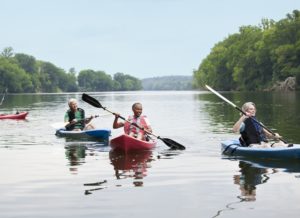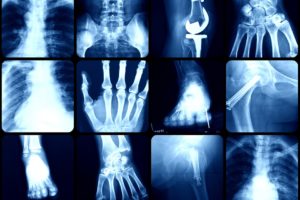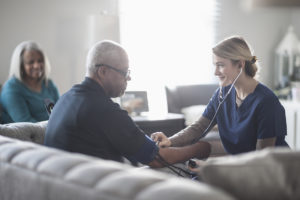Functional Aging/Older Adults
Secrets of Super Agers
What’s their secret? Why do Super Agers, people who live past 90, have such long lives? What can you do to live a longer, healthier life?
Fit to Travel: Exercises for Seniors
Programming exercises for seniors is more important than ever, especially now that travel is opening up again, but your clients may not have kept up with their workouts over this last year. Here are some great ways to prepare your active agers for more adventure.
Bone Density and Healthy Aging
If you work with adults 50 and older, it may be time to educate them about the impact exercise can have on bone density and healthy aging.
Group Exercise May Help Older Adults Combat Loneliness
Group exercise not only boosts physical health but, for older adults, may also support mental well-being by reducing feelings of aloneness.
Sample Class: Seated Exercises for Older Adults
Older adults are more susceptible to deficits in cardiovascular fitness, muscle mass, strength and power, which may ultimately lead to losses in physical function. The following chair-based format focuses on improving outcomes for older participants, especially those who may need the support of a chair during exercise. Ready, Set, Sit! offers the variety of three 15-minute training segments (cardiovascular, high intensity and strength/power), while targeting important components that boost overall function.
Training Techniques for High-Performance Masters Athletes
Trainers and coaches can use examples of elite performances and aging research to develop training protocols for masters athletes.
Childhood Activity and Midlife Brain Fitness
Here’s one more solid reason to inspire kids to exercise. The secret to maintaining cognitive fitness later in life may lie in getting active while young and staying active throughout teen, young-adult and middle-aged years.
First-Time Marathon Training Has Anti-Aging Effect
Here’s a good reason to encourage your midlife clients to try an inaugural running event. First-time marathon runners who trained for 6 months saw a 4-year reduction in arterial age, according to study findings presented at EuroCMR 2019, a scientific congress of the European Society of Cardiology.
Having the Bone Health Talk With Clients
Clients may ask you about calories or how to “tone,” but how often do they ask questions about bone health and osteoporosis? If clients aren’t asking these questions, they should: 54 million adult Americans are at risk of breaking a bone (NOF 2019a). You probably already know that people who have osteoporosis should do weight-bearing exercises to slow the degradation and ease the effects. However, most people are given no more explanation than that. You may be in a position to offer answers to some of your clients’ questions.
Evening Cardio Training and Hypertension
In another clinical trial examining the impact of time of day on training effects, researchers found that cycling at moderate intensity for 45 minutes three times per week in the evening decreased clinical and ambulatory blood pressure in 50 middle-aged sedentary men with hypertension more than either morning training or stretching (the control group).
Evening HIIT and Sleep
The time of day your male clients train may affect their appetite and performance.
Walking Benefits Older Adults With Arthritis
People with osteoarthritis who walk briskly as little as 1 hour per week can significantly increase their odds of remaining functionally independent. Northwestern University researchers in Chicago examined more than 4 years of data from more than 1,500 adults—age 49 or older—who had arthritis but no disability. Their activity levels varied. Activity data analysis showed that people who did 1 hour of moderate-to-vigorous activity per week had a higher probability of remaining free from disability than those who exercised less.
Power Training vs. Strength Training for Older Adults
For maintaining functional ability—and potentially even for living longer—growing research
supports the benefits of power training, particularly as we age. Power is the ability to move weight with speed and to generate force and velocity with coordinated movement.
Exercise Linked to Longer Life
Keeping physically active or becoming more active during middle and older age is associated with a lower risk of death, regardless of past activity levels or existing health conditions, suggests a large United Kingdom study published in the June 26 issue of The BMJ.
There Is Power in Protein for Older Adults
Many older adults could benefit from dropping a few pounds of body fat. With weight loss, though, there are often reductions in bone strength and lean body mass, thereby raising the risk of mobility issues and injury from falls. New research shows that a diet tweak might help older people retain their muscle while simultaneously scaling down their body fat.
Once-Weekly Strength Training for Older Adults
Great news for healthy older adults who may not be able to weight-train more than once a week. For 65- to 75-year-old men and women, supervised whole-body resistance training once weekly for 6 months led to significantly less inflammation, lower blood pressure and blood sugar levels, and better overall well-being.
Stop and Smell the Daisies
CLIENT: Brenda Badish
PERSONAL TRAINER: Kelly Fletcher
LOCATION: KFit Studios, Brighton, Michigan
Brenda Badish had almost given up hope that she could regain her health. “I figured I was a few weeks away from pushing up the daisies,” she says.
Gender Differences in Fitness and Brain Function
Many studies show that cardiorespiratory fitness improvements boost brain fitness in later life. New research in the Journal of Applied Physiology (2019; doi:10.1152/japplphysiol.01046.2018) reveals that effects may differ between men and women.
Blood Pressure, Diet and Aging
It’s official: The typical Western diet is a major driver of rising blood pressure as we age, not age itself as previously thought, according to research from the Johns Hopkins University Bloomberg School of Public Health published in JAMA Cardiology. The study revealed that members of the isolated South American Yanomami tribe, with virtually no Western dietary influences, typically have no rise in their blood pressure numbers from age 1 to age 60.
Eat Fish for a Long Life
If you want to enjoy many more birthdays in great health, it could be a good idea to cast your line for omega-3-rich fish more often. In a 13-year study of older Americans, published in the journal BMJ, those with higher circulating blood levels of marine-derived, long-chain omega-3 fatty acids—such as docosapentaenoic acid—were significantly more likely to age healthfully than their peers with lower levels of these omegs-3s in their blood.



















